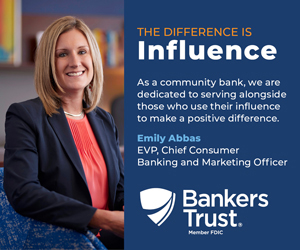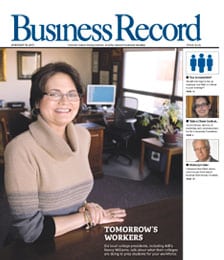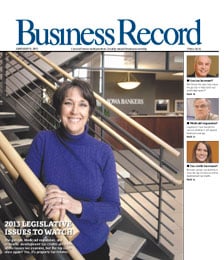Nationwide uses surveys to engage employees
Level of engagement directly correlated to financial performance

.floatimg-left-hort { float:left; } .floatimg-left-caption-hort { float:left; margin-bottom:10px; width:300px; margin-right:10px; clear:left;} .floatimg-left-vert { float:left; margin-top:10px; margin-right:15px; width:200px;} .floatimg-left-caption-vert { float:left; margin-right:10px; margin-bottom:10px; font-size: 12px; width:200px;} .floatimg-right-hort { float:right; margin-top:10px; margin-left:10px; margin-bottom:10px; width: 300px;} .floatimg-right-caption-hort { float:left; margin-right:10px; margin-bottom:10px; width: 300px; font-size: 12px; } .floatimg-right-vert { float:right; margin-top:10px; margin-left:10px; margin-bottom:10px; width: 200px;} .floatimg-right-caption-vert { float:left; margin-right:10px; margin-bottom:10px; width: 200px; font-size: 12px; } .floatimgright-sidebar { float:right; margin-top:10px; margin-left:10px; margin-bottom:10px; width: 200px; border-top-style: double; border-top-color: black; border-bottom-style: double; border-bottom-color: black;} .floatimgright-sidebar p { line-height: 115%; text-indent: 10px; } .floatimgright-sidebar h4 { font-variant:small-caps; } .pullquote { float:right; margin-top:10px; margin-left:10px; margin-bottom:10px; width: 150px; background: url(http://www.dmbusinessdaily.com/DAILY/editorial/extras/closequote.gif) no-repeat bottom right !important ; line-height: 150%; font-size: 125%; border-top: 1px solid; border-bottom: 1px solid;} .floatvidleft { float:left; margin-bottom:10px; width:325px; margin-right:10px; clear:left;} .floatvidright { float:right; margin-bottom:10px; width:325px; margin-right:10px; clear:left;}
As the nation continues to cope with cutbacks and layoffs amid a recession, the ways in which companies communicate objectives to and garner feedback from their employees are becoming more essential to their survival.
“In challenging economic times,” said Steve Bond, a vice president in Nationwide Mutual Insurance Co.’s human resources department, “our commitment to the engagement process and enabling those open and honest discussions is even more important.”
To measure the engagement level of its personnel, Nationwide has been conducting employee engagement surveys for nearly a decade, fine-tuning the evaluations along the way to have the greatest possible impact on its retention efforts.
The company, which employs more than 35,000 people across the country, including 4,000 in Greater Des Moines, uses a third party to administer the survey, centered on bolstering communication and creating development opportunities for each person, team, department and business unit at every level of the organization, from an entry-level employee to the CEO.
“The primary purpose of the survey is to understand associates’ perspectives,” Bond said. The survey provides a starting point for discussions and a process to give feedback to specific teams, he said, with the ultimate goal of improving the quality of employees’ work environment.
Following a seven-year relationship with Hewitt Associates LLC, Nationwide last year switched to a new survey administrator, Gallup Consulting, a division of Gallup Inc., after determining that the Washington, D.C.-based firm could best fit its needs.
“One of the goals is to keep it short,” Bond said of Nationwide’s annual assessment, which is “one key component of our overall engagement and retention efforts.”
In the late 1990s, Gallup was like everyone else in the industry, churning out 130- to 150-question employee-satisfaction surveys, said Eric Nielsen, Gallup’s senior director of media strategies. Unfortunately, he said, the long surveys lacked focus and were actually diminishing employee engagement rather then improving it. “More importantly,” he said, the surveys “didn’t relate to business outcomes.”
In 1999, with a goal of differentiating great financially performing organizations from average ones, Gallup began combing through 40 years of data to determine which questions were the most applicable to financially successful organizations and how the responses could be used to formulate an action plan.
The result of that analysis led to 12 core elements that Gallup has found to have a direct link to an organization’s performance, productivity, business outcomes and financial performance. And though Gallup may not have coined the term “employee engagement,” Nielsen said, “we certainly popularized it.”
According to Gallup, which defines an engaged employee as someone who “is involved in and enthusiastic about his or her work,” engaged workgroups are more productive, more profitable and less likely to be absent from work. Gallup also maintains that the more engaged an employee is, the less likely he or she will leave an organization, whereas an “actively disengaged” employee can drive down the morale of co-workers and harm a company’s bottom line.
“Engagement translates into specific benefits for our customers,” Bond said, adding that Nationwide is able to compare the results of its survey with “the most relevant Gallup databases in the financial services and insurance industry.”
In the last three years, Nielsen said, Gallup has administered its survey for 542 clients comprising more than 6.1 million respondents and 759,000 workgroups in 163 countries, providing a historical database that allows clients to benchmark their employees’ engagement level against data from other companies around the world.
Based on its research, Gallup estimates that the average organization’s ratio of engaged workers to actively disengaged employees is 3.3 to 1, Nielsen said. For the 85 clients representing the finance and insurance industry in its database, Gallup reports a 4.7-1 ratio. Roughly 60 of Gallup’s clients have a “world class” 8-1 ratio.
“The results serve as a starting point for team discussion,” Bond said. Though employee responses are anonymous and strictly confidential, he said, his experience has been that teams talk very openly and candidly about how the questions are answered.
“The key is that manager-employee relationship,” Nielsen said. “We train and work with managers to help them talk to the teams,” by providing an outline on how to drill down into the responses to help facilitate dialogue.
The goal is to make the results available at the most detailed level possible, he said, where employees and leaders are able to have the greatest impact on their team environment.
The results are “not something that go in a binder and on some shelf in human resources,” Nielsen said, adding that the old survey model generated complaints from employees that after spending the time to complete it, they were never given any feedback.
“The underlying reason for having the survey is to engage them in open and honest dialogue,” Bond said. “We want their responses to be candid and unhindered.”
In addition to the core statements included in every Gallup survey, such as “I know what is expected of me at work,” “at work, my opinions seem to count,” and “in the last six months, someone at work has talked to me about my progress,” the firm encourages clients to add questions related to specific organizational issues and culture. This allows companies such as Nationwide, which puts a lot of emphasis on accountability and customer relations, to stress their core values. Nielsen said the average Gallup employee engagement survey includes about 31 to 34 questions.
Nationwide completed its 2009 engagement survey in August, and the results will be made available to team leaders in early October, Bond said.
Nationwide declined to disclose the overall results of last year’s survey, saying it was proprietary information. Bond did say, however, that in 2008, all 4,700 of Nationwide’s “people leaders,” those who have employees reporting to them, received detailed results from their respective teams.
“There can be great variation across teams,” Bond said, as one team’s strength may be an area in which another needs to improve. “That is the value of providing the score card down to the team level,” he said. “Each team can take action on what is most important to them.
“Our commitment is to enable teams to have information that enables them to understand their team’s workplace environment and identify areas on which they can work to improve,” Bond said. “We provide a variety of resources and support over the course of the year” to promote employees’ communication with senior leadership.
“Managing expenses and resources are key elements to maintain a competitive edge in today’s insurance marketplace,” Bond said, adding that “as a growing company, Nationwide has been required to make some strategic and targeting changes” in the last 12 months.
Nationwide reduced its work force this year by approximately 600 positions in locations across the country, confirmed spokeswoman Liz Christopher. “While we have made reductions in some areas, we are hiring in others,” she said. “Nationwide continues to diligently manage its resources to be even more efficient and competitive in the insurance and financial services sector.”
Primarily based on the “stress testing of Nationwide’s investment portfolio,” Fitch Ratings in July downgraded the insurer financial strength ratings for Nationwide Mutual and several of its subsidiaries to “A” from “A+.” Though “Nationwide maintains a solid competitive position in personal lines insurance with diversification across both property/casualty and life insurance markets,” Fitch reported, the testing “indicated a reasonable likelihood of some additional, yet moderate, capital pressure due to future potential impairments and realized investment losses.”
“Managing expenses and resources are key elements to maintain a competitive edge in today’s insurance marketplace,” Bond said. Engagement is the “emotional connection of an associate with (his or her) workplace.”
“The higher the level of engagement in a culture, the higher the tendency that the group will be self-managed,” said Victor Aspengren, a local speaker, author and consultant in the areas of leadership and company culture. Employees who feel they are part of the process are more likely to take initiative. “They don’t wait around,” he said. “It simplifies everything in an organization.”








